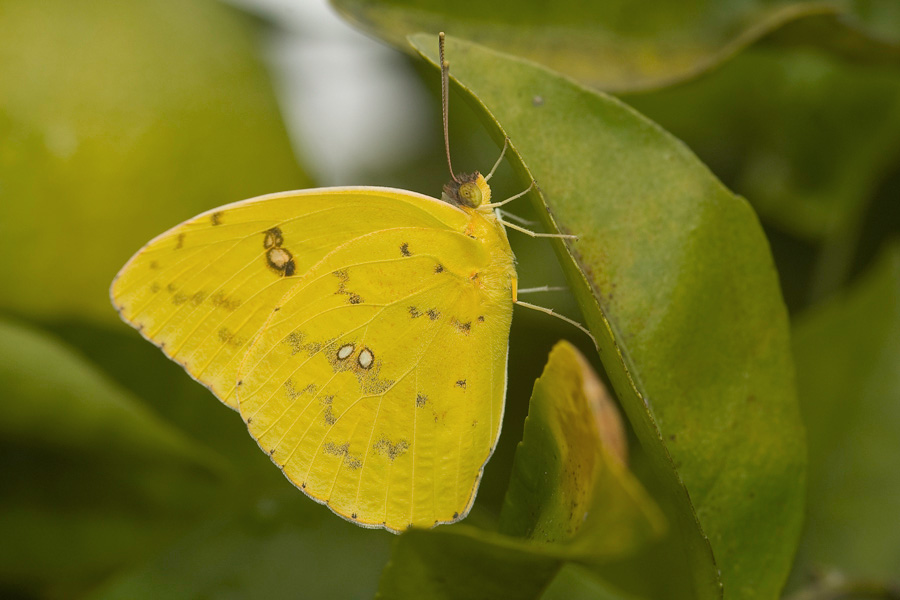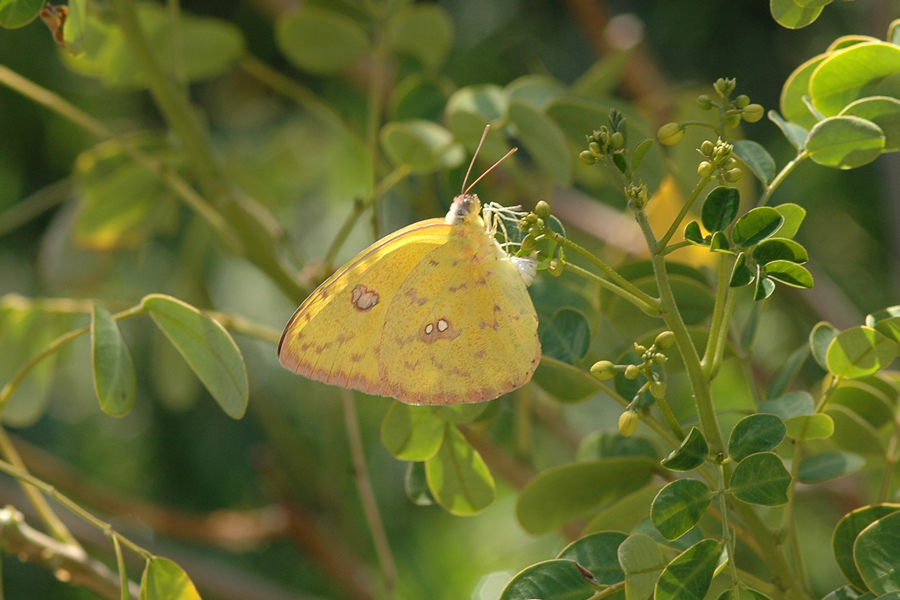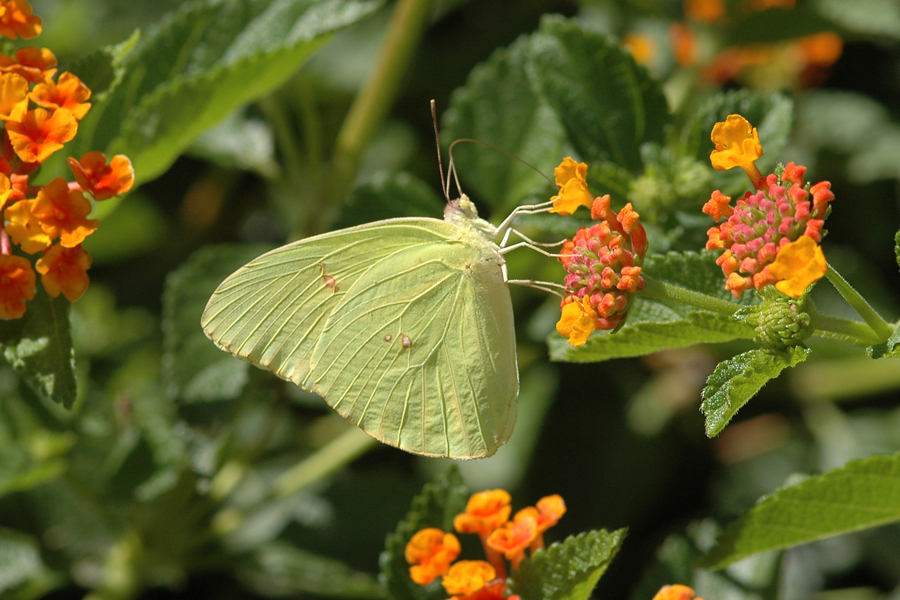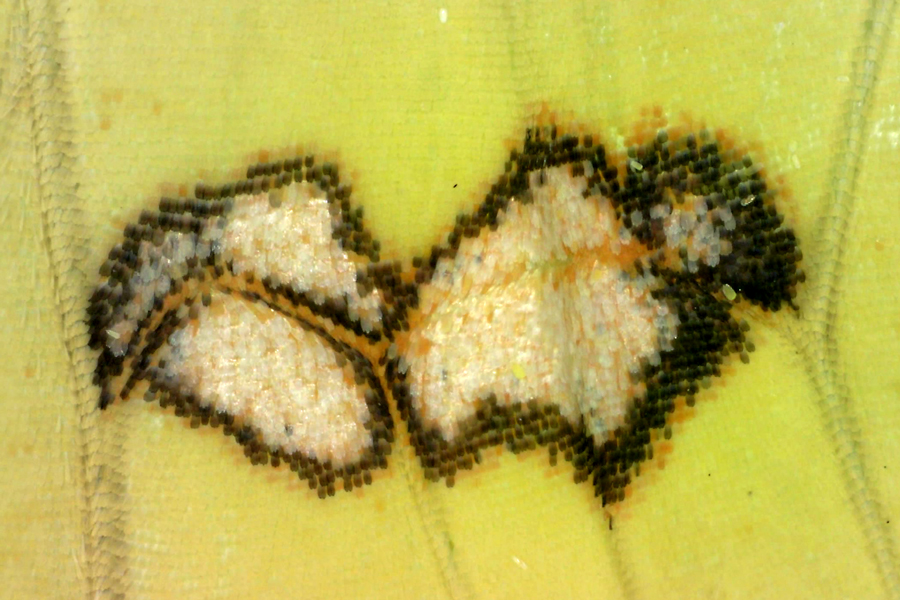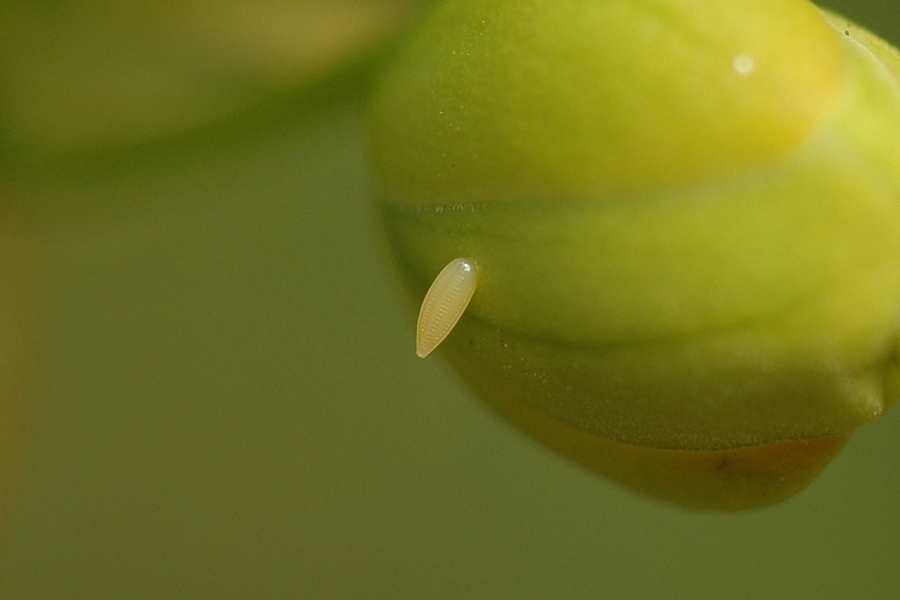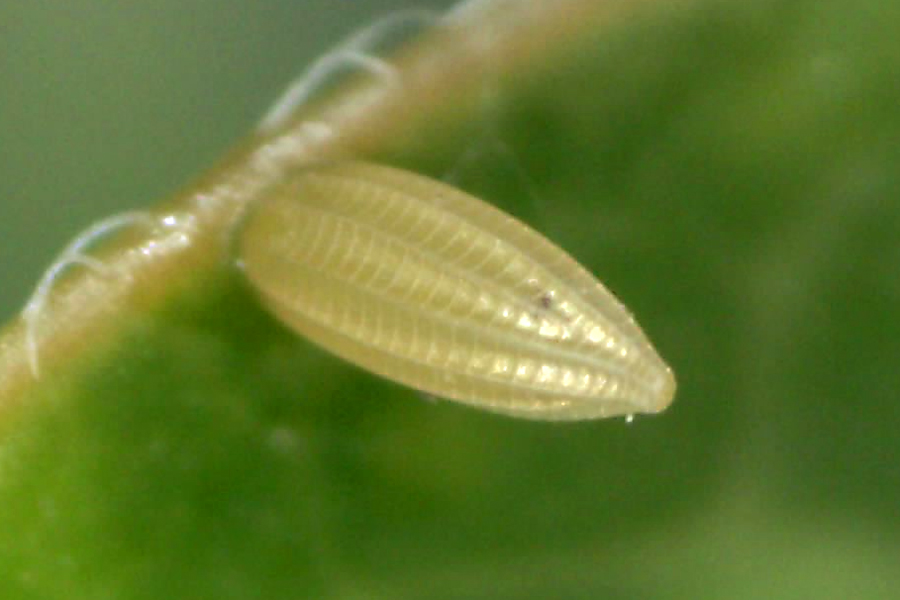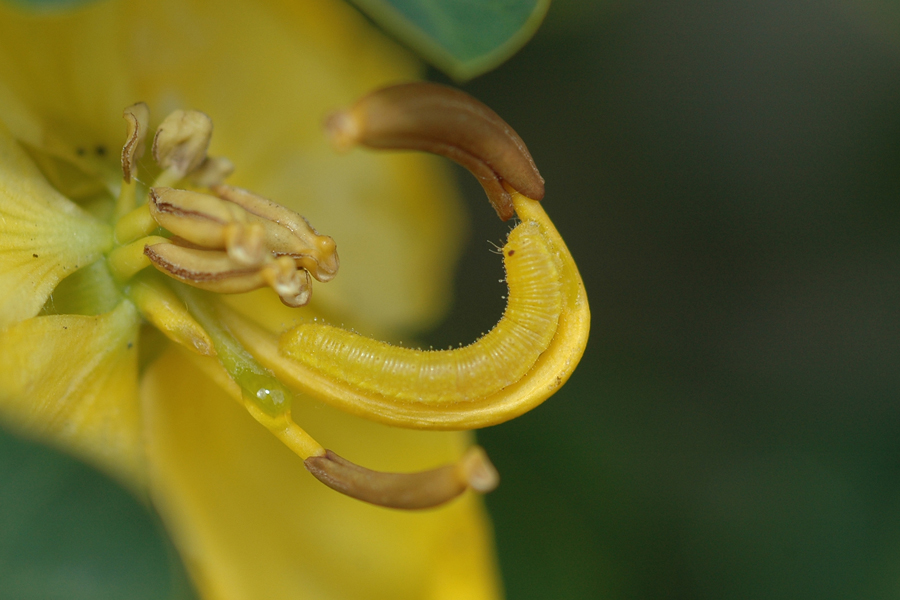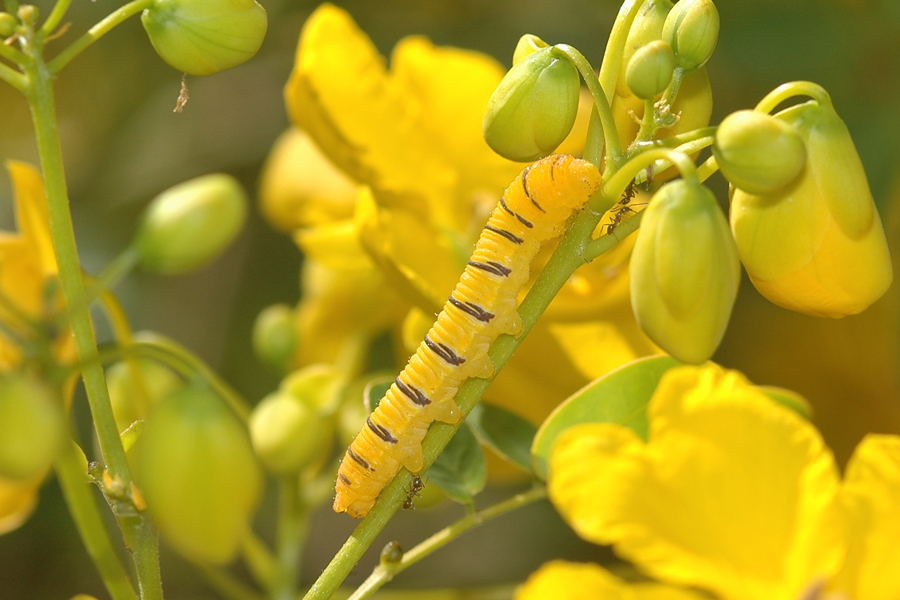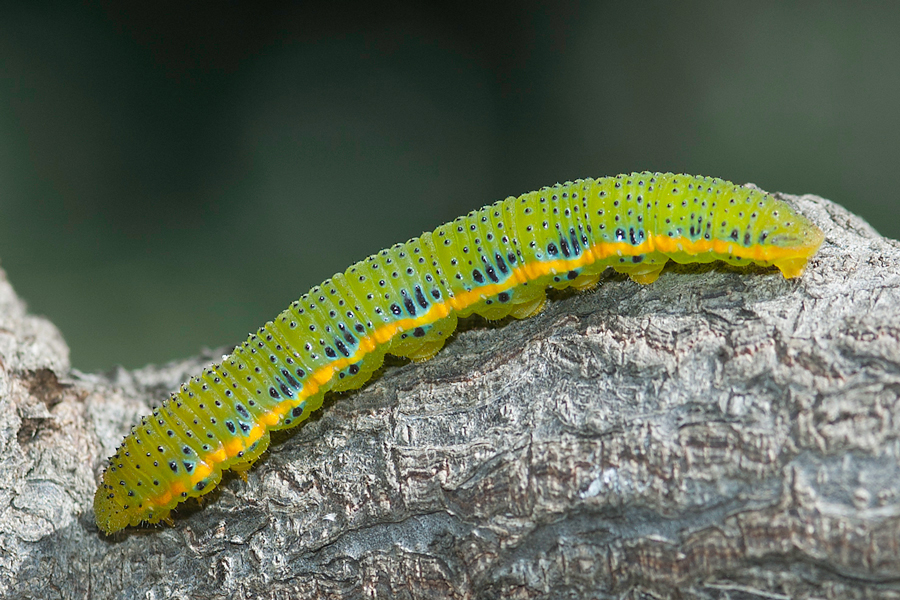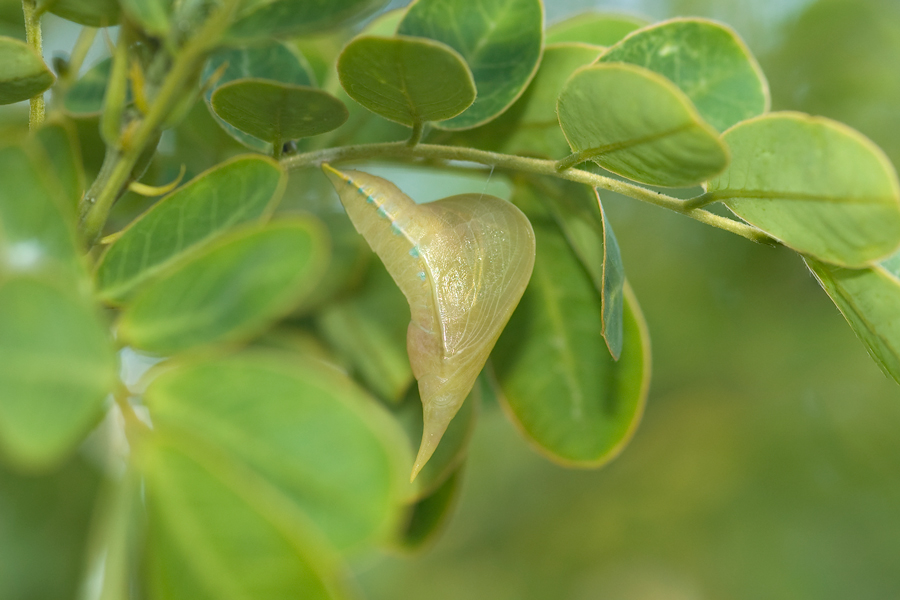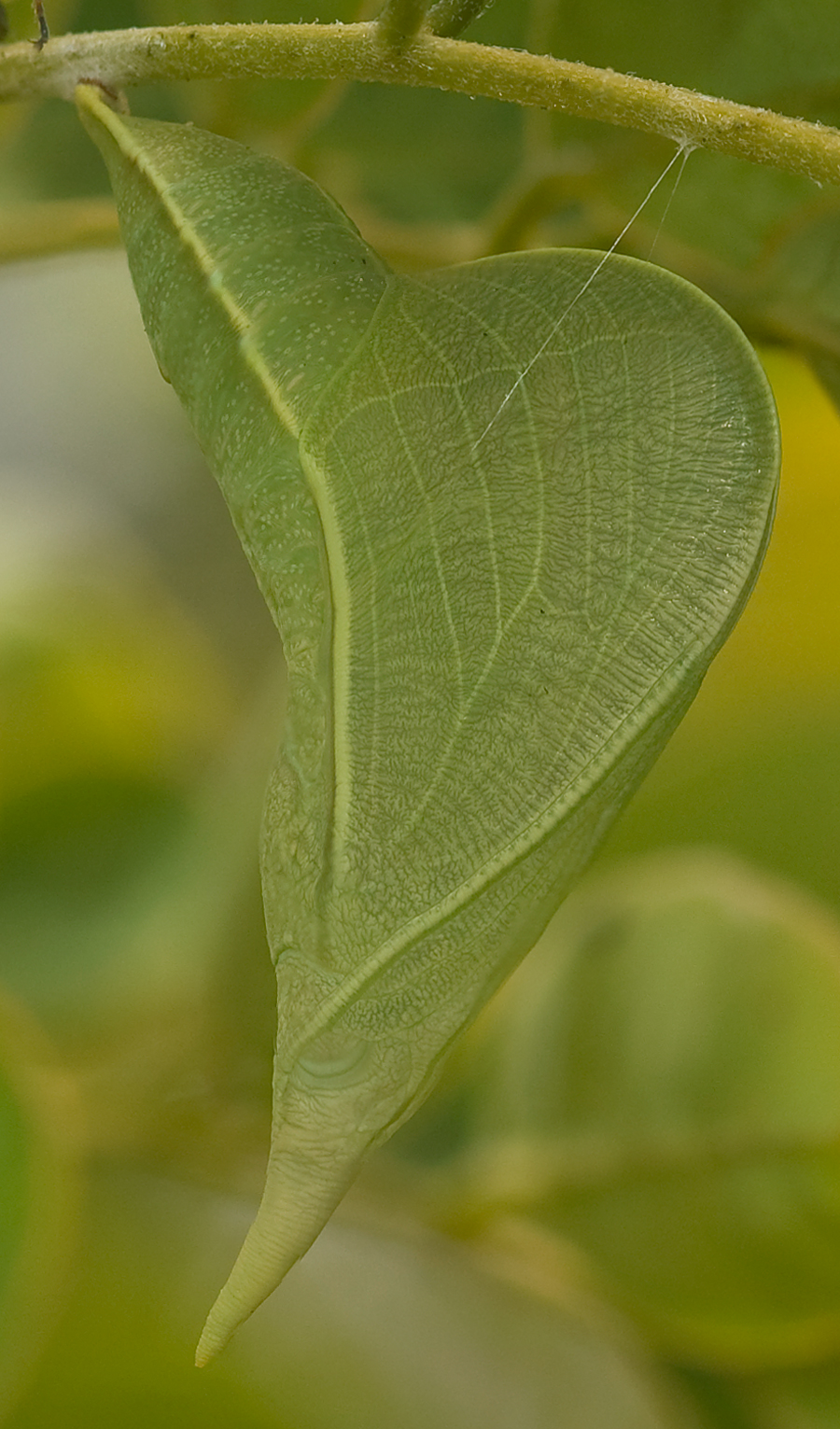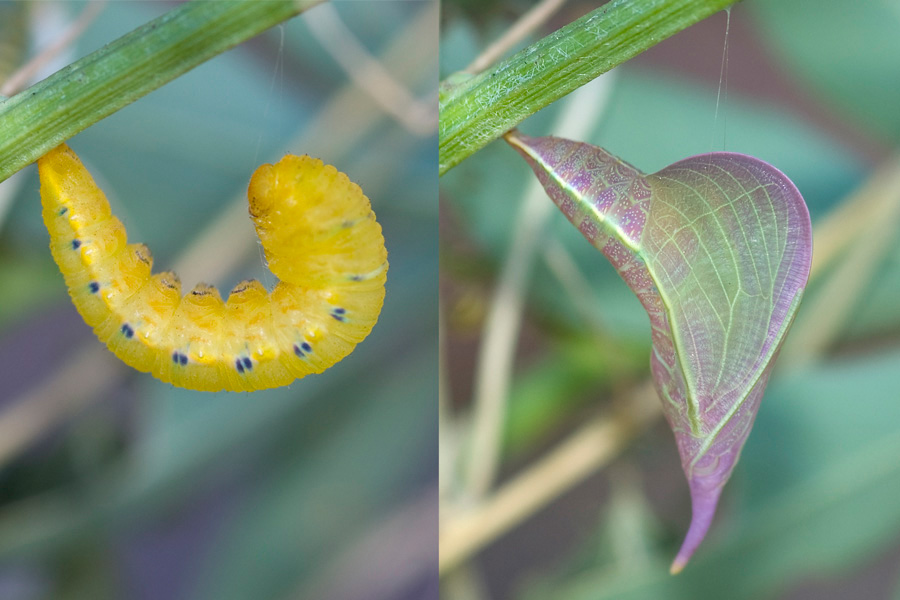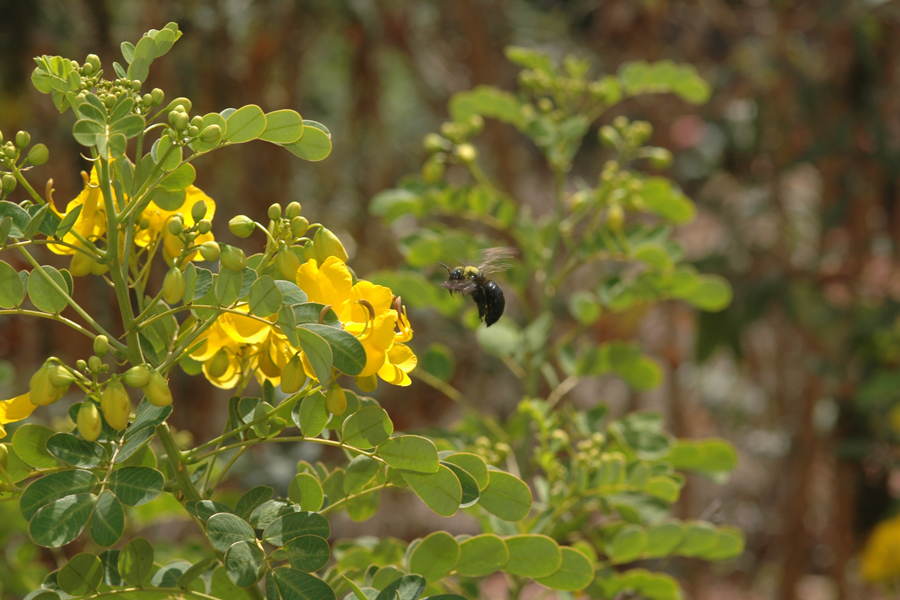Phoebis sennae marcellina
Cloudless Sulphur
Growing up in suburban Los Angeles, I don't remember ever seeing these yellow butterflies and when I first saw some in Long Beach as an adult, I thought they were something rare. Then I planted Senna bicapsularis in my yard, and now they are possibly the most common butterfly in my garden. In fact, what's rare is walking into my garden and not seeing them. They are a great butterfly to raise in the southern California suburbs, and one can watch the entire life cycle easily. As illustrated here, the larvae have a couple of forms and can be quite beautiful in the green form, and the chrysalises, which have several color varieties, are something to behold. Males are yellow, and females vary from yellow to nearly white, with markings on the underside of the wing that vary in boldness. An obvious native choice for this butterfly would be Senna armata, which does well in the deserts. I have seeds, but haven't tried it yet.
Not surprisingly, this common and widespread species was named long ago: Pieter Cramer is the author, from a 1777 work, based on a specimen apparently from Suriname ("These are found in Suriname").
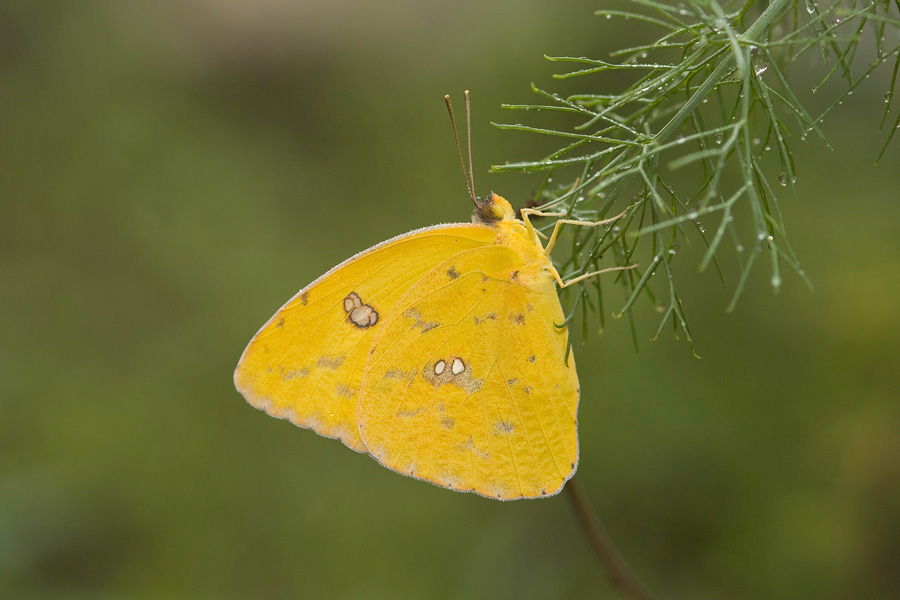
A female in the morning on a rainy weekend. Usually these hardly stay still, so it was nice to have one posing for me. Long Beach, December 1, 2012.
A male cloudless sulphur in my garden in Long Beach. December 3, 2012.
A female cloudless sulphur ovipositing on a Senna bicapsularis shrub I planted for this purpose in my garden. I find they place the eggs on buds and the young leaves of new shoots. If on the bud, larvae bore into the bud to feed. October 21, 2006.
Some male cloudless sulphurs have few markings. Boyce Thompson Arboretum in Arizona, September 25, 2007.
Close up of the marks on the underside of a male cloudless sulphur's forewing. This one was in my yard in Long Beach. July 26, 2020.
Egg of a cloudless sulphur on Senna bicapsularis in my backyard. July 23, 2020.
Another egg in my garden, under the microscope. July 23, 2020.
Early instar caterpillar. November 26, 2008.
The typical form of the mature larva: yellow with a brown banding at each segment. October 22, 2009.
This is the green form of the cloudless sulphur larva. My garden in Long Beach, March 9, 2013.
A pupa on the tree. This is a pretty new chrysalis. July 9, 2011.
A couple of days later the same cloudless sulphur pupa (above) has turned green.
A pre-pupa cloudless sulphur silked up and ready to go; then three days later, on a vine in my backyard. October 23 and 26, 2012. Note the very different colors of this chrysalis as opposed to the one above. Color can vary based on the lightness/darkness of nearby objects.
I have used Senna bicapsularis to attract and raise cloudless sulphurs for years. It's a native of northern South America, so not a native garden choice for us. If I had Senna armata going I would try that.
©Dennis Walker

